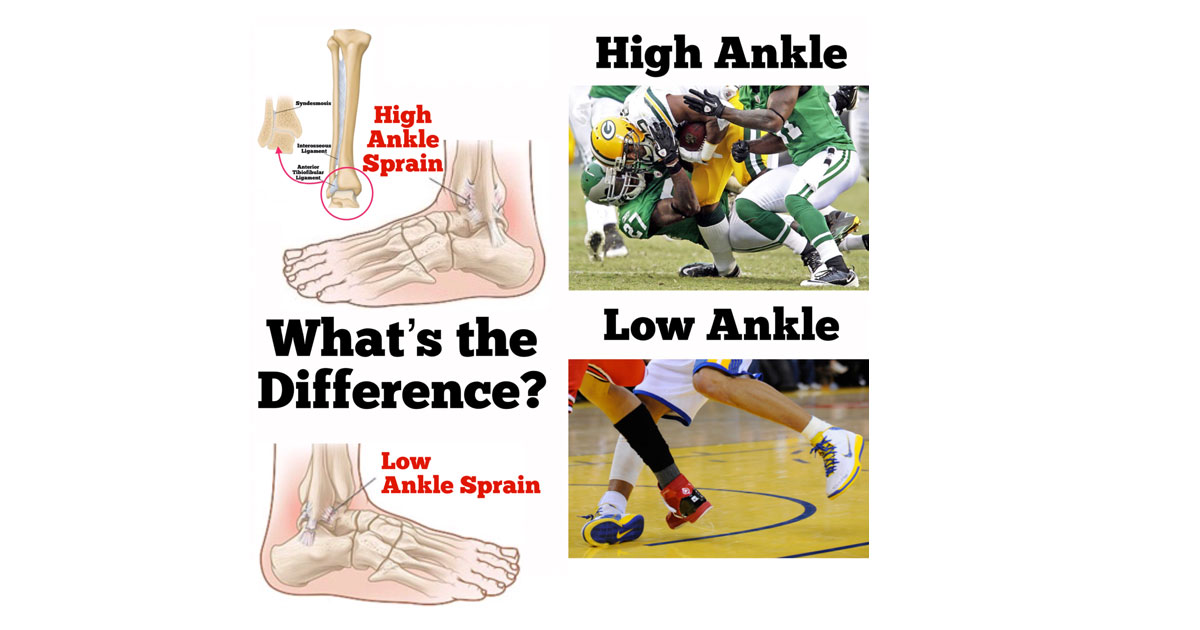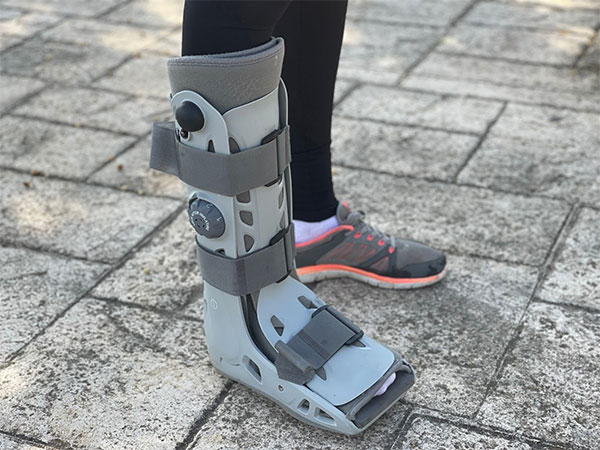
High Ankle Sprains versus Low Ankle Sprains
High ankle sprains and low ankle sprains are both common injuries involving the ankle joint High ankle sprains and low ankle sprains differ primarily in the location of the injured ligaments and the mechanisms that cause them. Here's a breakdown of the main differences between the two:
1. Location of Injured Ligaments:
- High Ankle Sprains: Involve damage to the syndesmotic ligaments (anterioinferior tibiofibular ligament (AITFL) and the posterioinferior tibiofibular ligament (PITFL)) that connect the tibia and fibula bones above the ankle joint.
- Low Ankle Sprains: Involve damage to the ligaments around the ankle joint, particularly the lateral ligaments (anterior talofibular ligament (ATFL), calcaneofibular ligament (CFL), and posterior talofibular ligament (PTL)).
2. Mechanism of Injury:
- High Ankle Sprains: Typically caused by a forceful outward twisting of the foot or a rotational force on the leg, such as in sports like rugby, rugby league or American football (often in a tackle where the tacklers body lands on the ankle).
- Low Ankle Sprains: Often caused by a sudden inversion (rolling inward) or eversion (rolling outward) of the foot, usually during activities such as soccer, basketball and netball.
3. Symptoms and Presentation:
- High Ankle Sprains: Symptoms include pain and tenderness above the ankle, bruising, difficulty bearing weight, and instability. Generally there is less swelling than with a low ankle sprain. Pain may be felt more running up the side of the lower leg than directly at the ankle joint.
- Low Ankle Sprains: Symptoms include pain, swelling, bruising, instability, and difficulty walking or bearing weight on the affected ankle. Pain is typically localized to the lateral or medial aspect of the ankle joint.
4. Recovery Time:
- High Ankle Sprains: Recovery time is often longer compared to low ankle sprains due to the nature of the injury involving ligaments that stabilize the tibia and fibula. Rehabilitation may take several weeks to months.
- Low Ankle Sprains: Recovery time varies depending on the severity of the injury, ranging from a few days to several weeks. Grade I low ankle sprains may heal relatively quickly within 1-2 weeks, whereas grade III ankle sprains may take up to 12 weeks.
5. Treatment Approach:
- High Ankle Sprains: Treatment often involves immobilization with boot and a period of partial weight bearing (PWB) or non-weight bearing (NWB) using crutches. A physiotherapy guided rehabilitation exercises to strengthen the ankle and improve stability. Severe cases may require surgical intervention to repair the damaged syndesmotic ligaments.

Treatment of high ankle sprains often involve an immobilization boot
- Low Ankle Sprains: Treatment typically involves the RICE protocol (rest, ice, compression, elevation), pain management, ankle bracing or taping, and rehabilitation exercises focused on restoring range of motion, strength, and proprioception. With grade II-III ankle sprains a the patient may be required to wear a boot for a short period, possibly with the aid of crutches.
Understanding these differences is crucial for accurate diagnosis and appropriate management of high and low ankle sprains. At Sports and Spines Physiotherapy our physiotherapist’s can provide an accurate diagnosis of the ankle sprain whether it be high or low and prescribe the appropriate rehabilitation plan. It is crucial the diagnosis is accurate as the rehabilitation programme is different between both.
